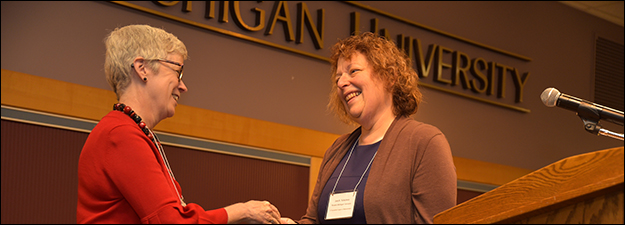Geoinformatics: Challenges of Medieval Geodata and Digital Maps
Sponsoring Organization(s)
Medieval Association of Place and Space (MAPS)
Organizer Name
Matthew Boyd Goldie
Organizer Affiliation
Rider Univ.
Presider Name
Matthew Boyd Goldie
Paper Title 1
Geodatabases Design for Medieval Islamic Maps: Azimuth, Altitude
Presenter 1 Name
Karen Pinto, Kathleen M. Baker
Presenter 1 Affiliation
Boise State Univ., Western Michigan Univ.
Paper Title 2
The Oxford Outremer Map and the Challenge of Translating Space
Presenter 2 Name
Tobias Hrynick
Presenter 2 Affiliation
Fordham Univ.
Paper Title 3
Virtual Pilgrims, Virtual Maps: Using GIS to Understand Late Medieval "Representational Space"
Presenter 3 Name
Kathryne Beebe
Presenter 3 Affiliation
Univ. of Texas-Arlington
Paper Title 4
Spatializing Information and Informatizing Space
Presenter 4 Name
Angela R. Bennett
Presenter 4 Affiliation
Univ. of Nevada-Reno
Start Date
12-5-2017 3:30 PM
Session Location
Schneider 1135
Description
This session discusses the challenges in building platforms for medieval geodata, such as geographic information systems (GIS), for the presentation of data on maps and in other graphic forms. Panelists examine, theoretically and otherwise, the approaches and results of presenting geoinformation for medieval studies. Papers explore how GIS and other digital projects can produce new findings and investigate potential shortcomings. Analysis includes theorizations of geoinformatics, space more generally, and geographical and imaginary spaces. Questions panelists address include: What are medieval data? How qualitatively rich can digital information be, and what kinds of texts can or should be mapped? How is the visual presentation of data different from a written account? Are there useful ways to map non-specific or non-geographic spaces, and are there compelling reasons to do so?
Matthew Boyd Goldie
Geoinformatics: Challenges of Medieval Geodata and Digital Maps
Schneider 1135
This session discusses the challenges in building platforms for medieval geodata, such as geographic information systems (GIS), for the presentation of data on maps and in other graphic forms. Panelists examine, theoretically and otherwise, the approaches and results of presenting geoinformation for medieval studies. Papers explore how GIS and other digital projects can produce new findings and investigate potential shortcomings. Analysis includes theorizations of geoinformatics, space more generally, and geographical and imaginary spaces. Questions panelists address include: What are medieval data? How qualitatively rich can digital information be, and what kinds of texts can or should be mapped? How is the visual presentation of data different from a written account? Are there useful ways to map non-specific or non-geographic spaces, and are there compelling reasons to do so?
Matthew Boyd Goldie

